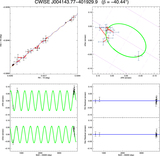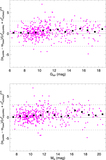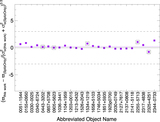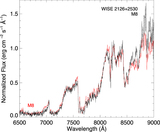Image Details
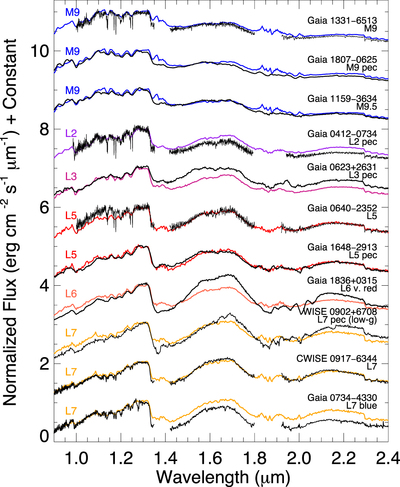
Caption: Figure 10.
Spectra of M- and L-type dwarfs compared to the spectrum of the standard nearest in type. These near-infrared standards are taken from Kirkpatrick et al. (2010). The flux of all objects is normalized to one at 1.28 μm and offset by integral increments to ease comparison. Spectra of the target objects are in black, and those of the standards are in other colors. Our spectral classification of each target object is also shown in black, and that of the nearest standard in other colors. Smoothing has been applied for some of the noisier target spectra.
Copyright and Terms & Conditions
© 2021. The American Astronomical Society. All rights reserved.



